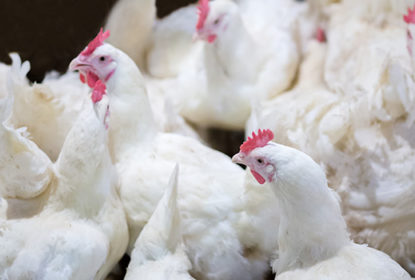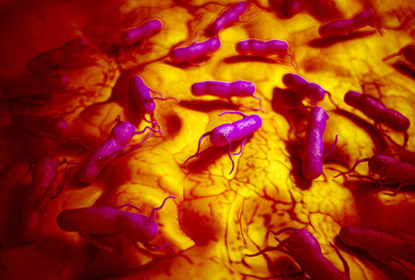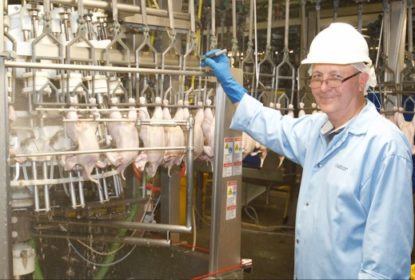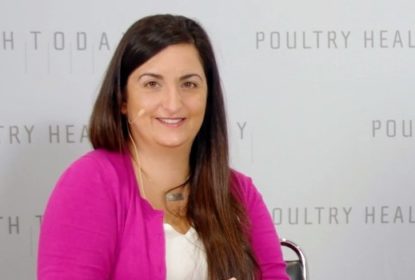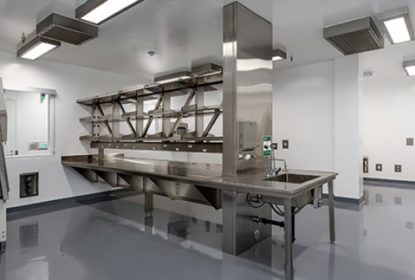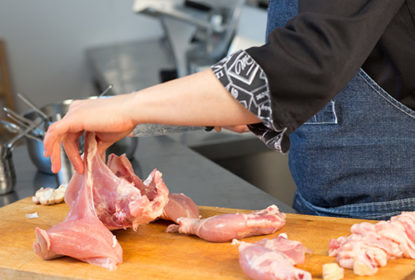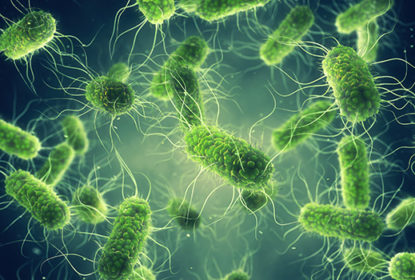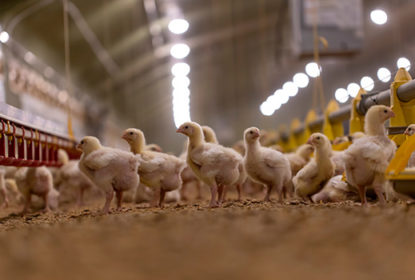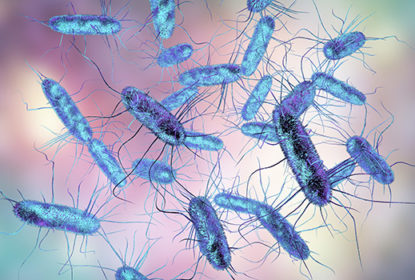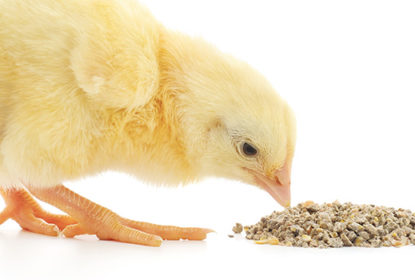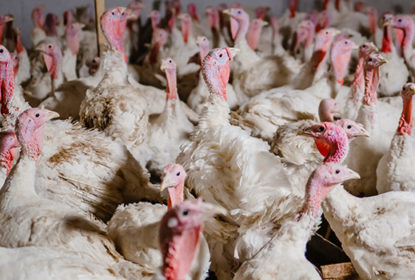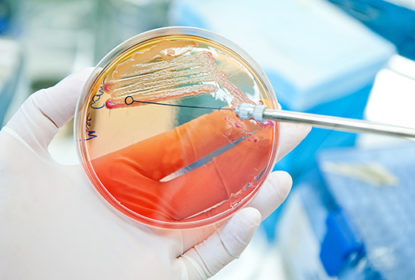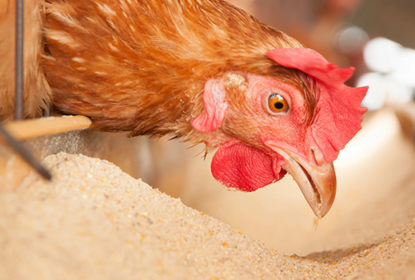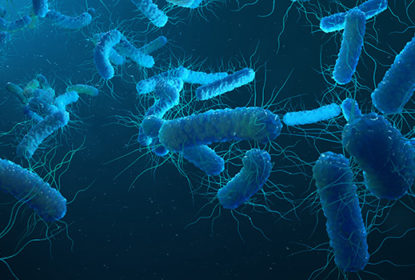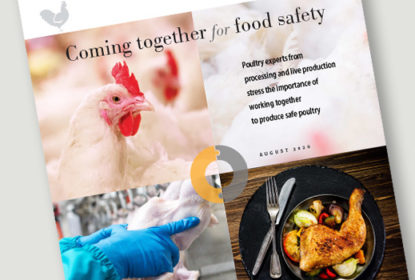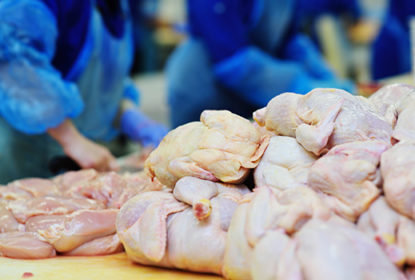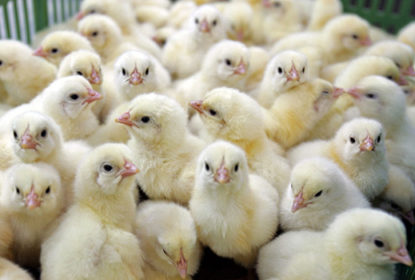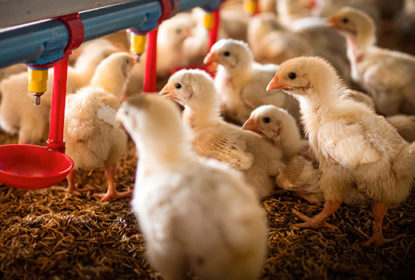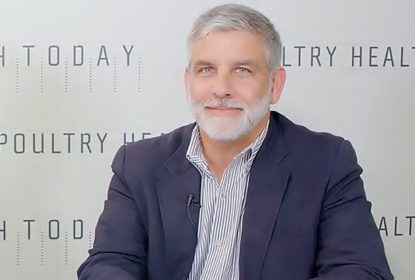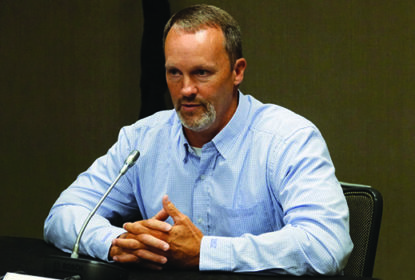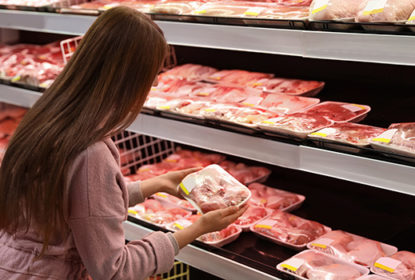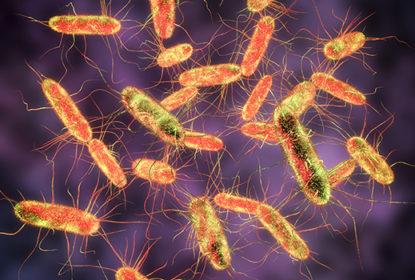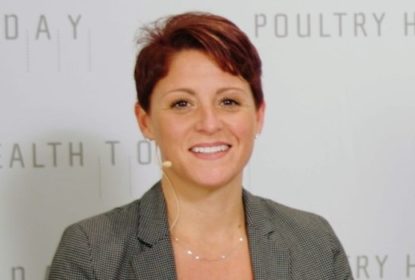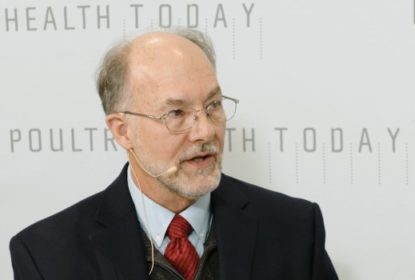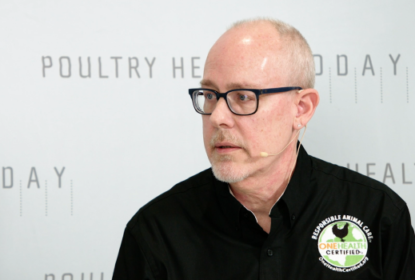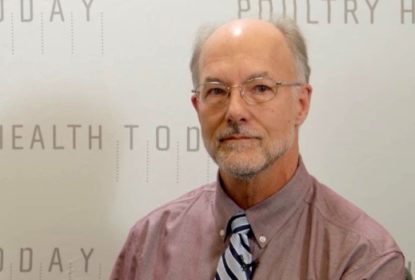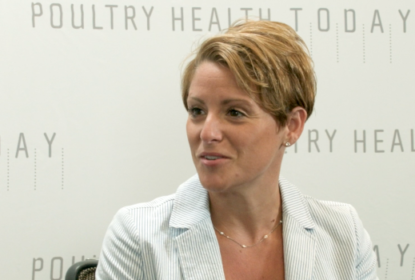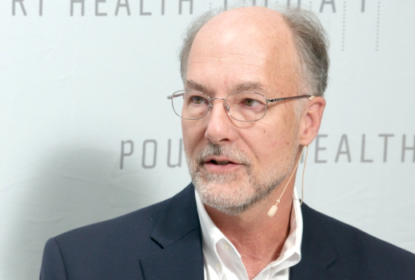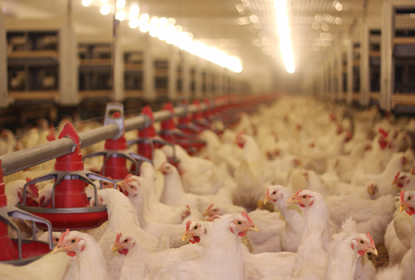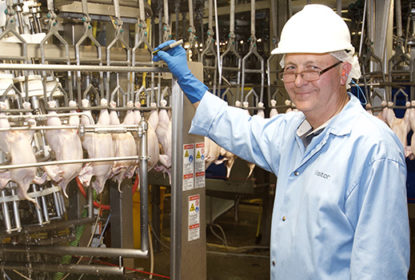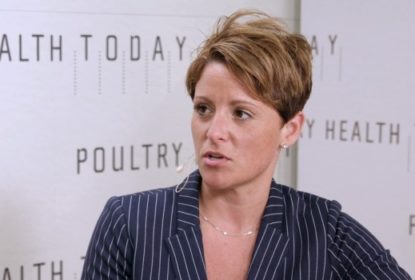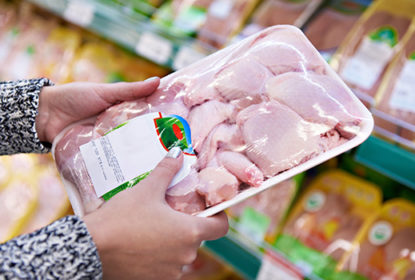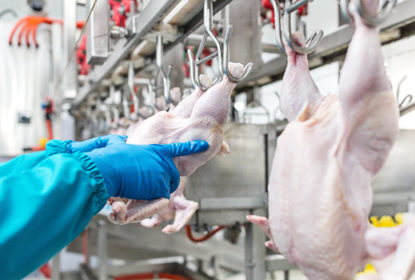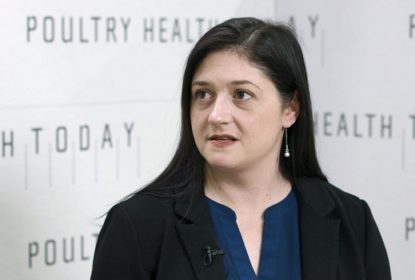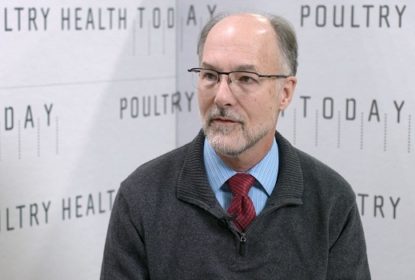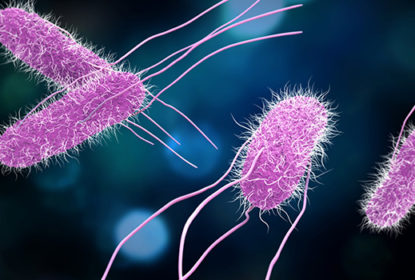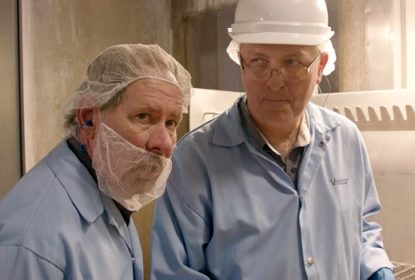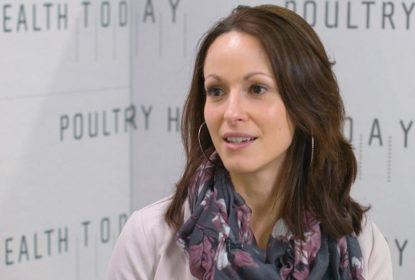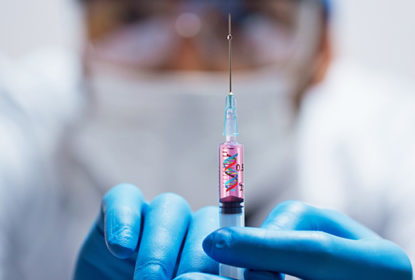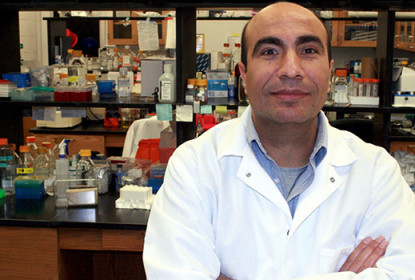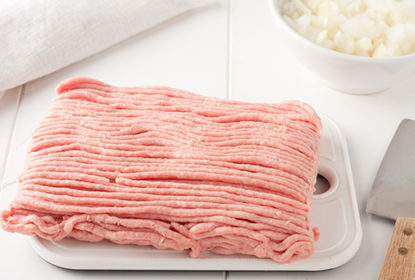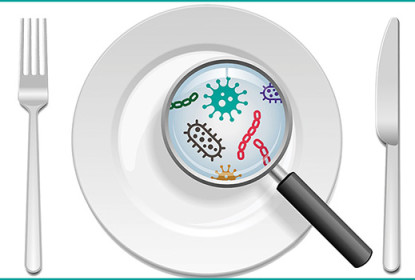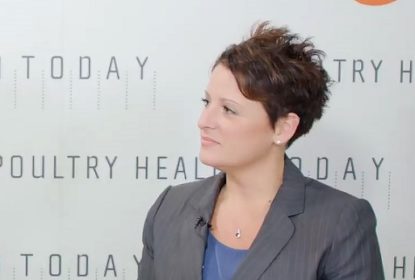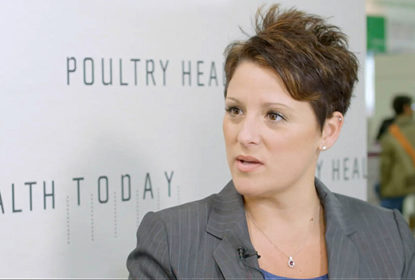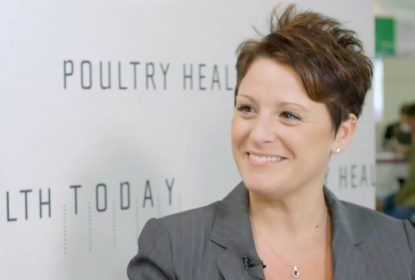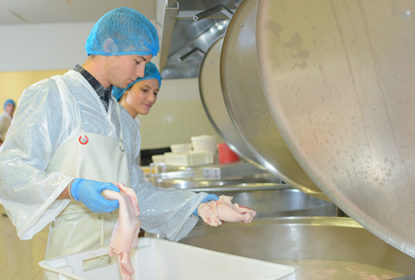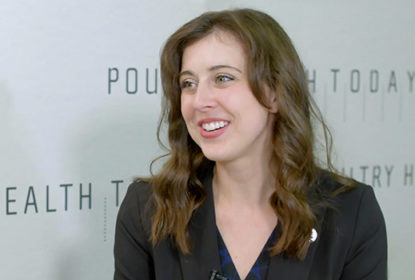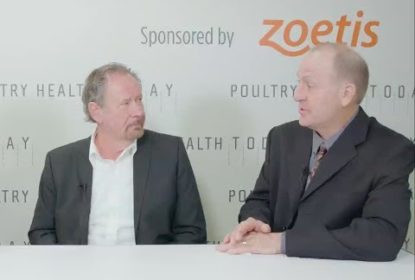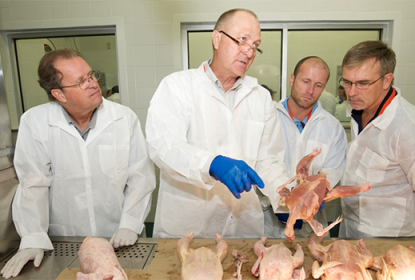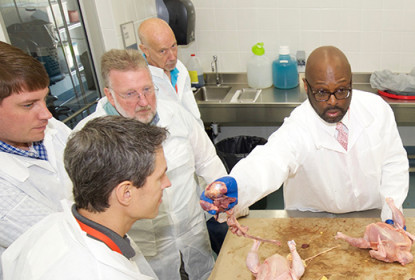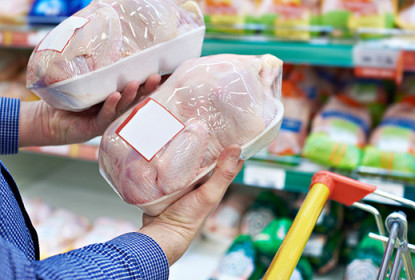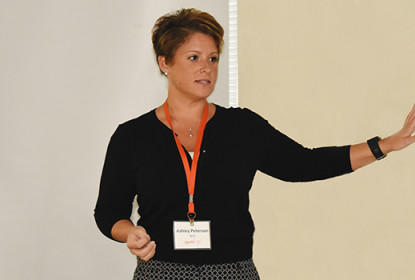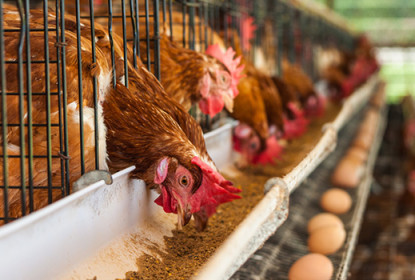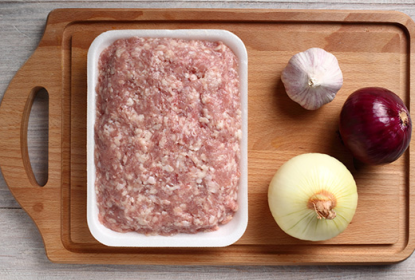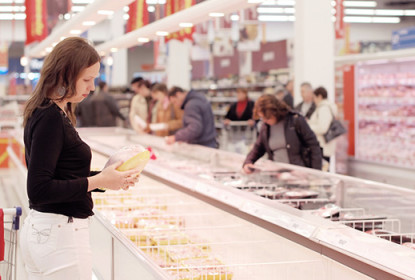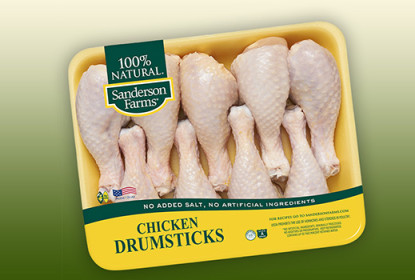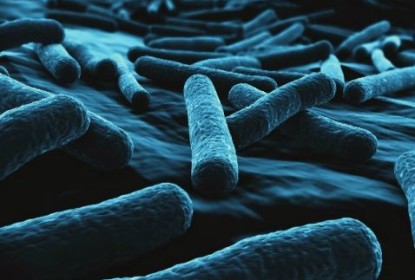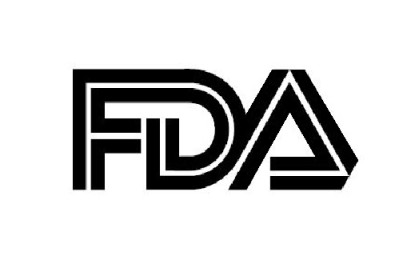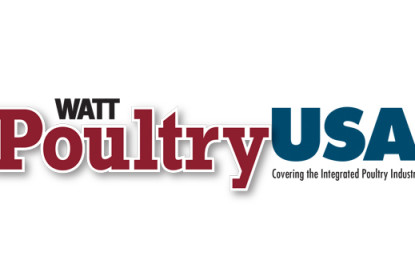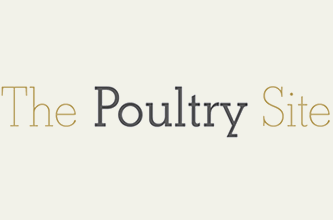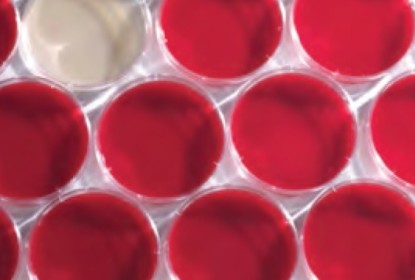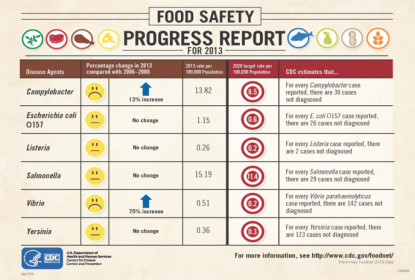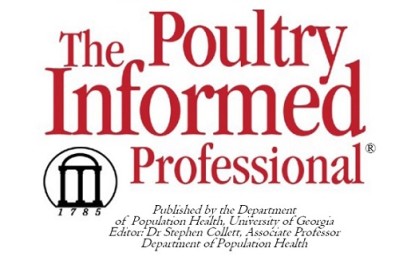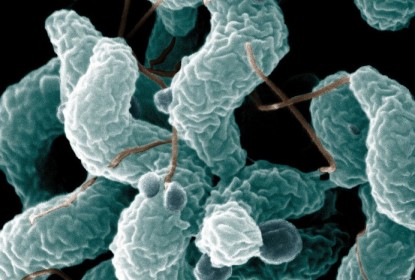Category Archive: Food Safety, Global TOP NEWS, PHT US, TOP NEWS
... Pre-harvest controls vital to tackling Salmonella prevalence
Dec 15, 2022Jennifer GrullonComments Off on Pre-harvest controls vital to tackling Salmonella prevalence
Producers must voluntarily adopt pre-harvest interventions to help reduce the prevalence of Salmonella in US poultry products, according to experts. Read about the USDA proposed regulations.... Study exposes Salmonella-contamination risks of integrated broiler production
Nov 22, 2022Jennifer GrullonComments Off on Study exposes Salmonella-contamination risks of integrated broiler production
Integrated broiler producers in Europe pose a risk of transmitting and maintaining clones of Salmonella throughout the production chain, according to researchers in Spain.... Too few aware of FSIS guidelines about live Salmonella vaccines
Nov 22, 2022Jennifer GrullonComments Off on Too few aware of FSIS guidelines about live Salmonella vaccines
By Douglas L. Fulnechek, DVM, Senior Public Health Veterinarian, Zoetis... Home for the holidays? Poultry vet urges ‘aseptic technique’ in the kitchen
Nov 11, 2022Jennifer GrullonComments Off on Home for the holidays? Poultry vet urges ‘aseptic technique’ in the kitchen
By Robert O’Connor, DVM, MAM, Senior vice president, Foster Farms
Biosecurity, Food Safety, Global TOPICS, Interviews, News, PHT GLOBAL, PHT US, Podcast, TOPICS, Videos
... Don’t overlook feed biosecurity in efforts to manage Salmonella
Nov 02, 2022Jennifer GrullonComments Off on Don’t overlook feed biosecurity in efforts to manage Salmonella
Biosecurity in feed mills and on-farm feed storage should not be overlooked when it comes to managing the risk of Salmonella in poultry flocks, according to a turkey-health expert.... Impact of acidified water on live Salmonella vaccine evaluated in broilers challenged with S. Heidelberg
Oct 27, 2022Jennifer GrullonComments Off on Impact of acidified water on live Salmonella vaccine evaluated in broilers challenged with S. Heidelberg
Acidified drinking water did not impair the efficacy of a live Salmonella Typhimurium (ST) vaccine in broilers challenged with Salmonella Heidelberg.... Improving Salmonella surveillance in turkeys
Oct 17, 2022Jennifer GrullonComments Off on Improving Salmonella surveillance in turkeys
High-profile Salmonella outbreaks in turkeys in recent years have shown the need for improved surveillance in the turkey industry.... Research facility opened to help track and diagnose avian influenza outbreaks
Oct 13, 2022Jennifer GrullonComments Off on Research facility opened to help track and diagnose avian influenza outbreaks
Scientists’ ability to respond to outbreaks of highly pathogenic avian influenza and other emerging poultry diseases have been given a boost with the opening of an innovative research unit.
Antibiotic-free, Flock welfare, Food Safety, Global TOP NEWS, Interviews, News, PHT GLOBAL, PHT US, Podcast, TOP NEWS, Videos
... Live-vaccine program a ‘must have’ to deal with cage-free E. coli challenge
Oct 10, 2022Jennifer GrullonComments Off on Live-vaccine program a ‘must have’ to deal with cage-free E. coli challenge
A higher risk of bacterial challenges in cage-free egg production means a live-vaccination program against Escherichia coli is a “must-have minimum” for flocks reared in alternative systems.... Breed may impact broiler response to Salmonella infection
Oct 06, 2022Jennifer GrullonComments Off on Breed may impact broiler response to Salmonella infection
Research at the University of Arkansas suggests broiler breed could affect birds’ immune response to Salmonella exposure, according to Shawna Weimer, PhD, director of the Center for Food Animal...... No consensus on future success of Salmonella control for poultry industry
Oct 05, 2022Jennifer GrullonComments Off on No consensus on future success of Salmonella control for poultry industry
Opinions about the poultry industry’s future success in controlling Salmonella differ widely, judging by comments from panelists at a food-safety roundtable.
Flock welfare, Food Safety, Global TOP NEWS, Interviews, News, PHT GLOBAL, PHT US, Podcast, Research, TOP NEWS, Videos
... Salmonella serotypes are changing — monitor which ones are in your flock
Sep 28, 2022Jennifer GrullonComments Off on Salmonella serotypes are changing — monitor which ones are in your flock
It’s imperative for poultry producers and companies to know what strains of Salmonella may be circulating in their flocks, said Chuck Hofacre, president of the Southern Poultry Research Group in...
Food Safety, Global TOP NEWS, Interviews, News, PHT GLOBAL, PHT US, Podcast, Research, TOP NEWS, Videos
... Study highlights risk of high Salmonella exposure, more persistent serotypes
Sep 10, 2022Jennifer GrullonComments Off on Study highlights risk of high Salmonella exposure, more persistent serotypes
Feed conversion takes a bigger hit in birds with higher Salmonella exposure, while Salmonella Reading outlasts other serotypes through the grow-out period, suggests new work from the University of...
Condemnations, Food Safety, Global TOP NEWS, Interviews, News, PHT GLOBAL, PHT US, Podcast, TOP NEWS, Videos
... USDA evaluating Salmonella-reduction steps along the poultry supply chain
Sep 08, 2022Jennifer GrullonComments Off on USDA evaluating Salmonella-reduction steps along the poultry supply chain
Almost 25% of US foodborne illnesses continue to be linked to poultry products. To get an accurate measure of product contamination, USDA is evaluating the poultry supply chain.... Study shows modified-live vaccine can aid fight against Salmonella Infantis
Aug 24, 2022Jennifer GrullonComments Off on Study shows modified-live vaccine can aid fight against Salmonella Infantis
New research shows that using a modified-live Salmonella Typhimurium (ST) vaccine helps protect broilers against Salmonella Infantis, the most commonly-isolated serotype in chicken parts and...... Genomic technology sheds light on Salmonella serotypes in breeder flocks
Aug 04, 2022Jennifer GrullonComments Off on Genomic technology sheds light on Salmonella serotypes in breeder flocks
A technology called CRISPR-SeroSeq, which amplifies a section of the Salmonella genome, is helping paint a clearer picture of the serotypes circulating in breeder flocks.... Live vaccines are key to Salmonella-control programs — here’s why
Jul 19, 2022Jennifer GrullonComments Off on Live vaccines are key to Salmonella-control programs — here’s why
Immune responses to Salmonella infection are complex, but vaccination has become a key component of multi-step control programs. A new review of evidence to date suggests that live vaccines have...... Effective Salmonella control requires involvement of entire production chain
Jun 21, 2022Jennifer GrullonComments Off on Effective Salmonella control requires involvement of entire production chain
By Douglas L. Fulnechek, DVM, Senior Public Health Veterinarian, Zoetis... Limiting E. coli transmission from hen to offspring
Jun 04, 2022Jennifer GrullonComments Off on Limiting E. coli transmission from hen to offspring
TOOLBOX: An interview with Henrik Christensen, PhD, DVSc, University of Copenhagen, on the effect of Poulvac E. coli on bird health, laying performance and hatching results.
Flock welfare, Food Safety, Global TOP NEWS, Interviews, News, PHT GLOBAL, PHT US, Podcast, Research, TOP NEWS, Videos
... ‘Competitive exclusion’ is potential benefit of live Salmonella vaccines in young birds
Jun 02, 2022Jennifer GrullonComments Off on ‘Competitive exclusion’ is potential benefit of live Salmonella vaccines in young birds
Live vaccines for Salmonella have been found to start offering protection within a few days of administration, acting “almost as a [form of] competitive exclusion,” said Chuck Hofacre, president...... Poulvac Procerta HVT-IBD offers early immunity, greater pullet uniformity in layers
Jun 01, 2022Jennifer GrullonComments Off on Poulvac Procerta HVT-IBD offers early immunity, greater pullet uniformity in layers
TOOLBOX, Issue 31: An interview with John Brown, DVM, senior technical services veterinarian, Zoetis, on the advantages of using Poulvac Procerta HVT-IBD to protect chicks throughout their lives.... Salmonella Enteritidis in feed can be a source for broiler flocks
May 11, 2022Jennifer GrullonComments Off on Salmonella Enteritidis in feed can be a source for broiler flocks
The Southern Poultry Research Group created a challenge model to show how S. Enteritidis, can spread among birds when feed is contaminated and to help evaluate products that can eliminate or reduce...... Modified-live E. coli vaccine helps control mortality, improves livability in layer production
May 10, 2022Jennifer GrullonComments Off on Modified-live E. coli vaccine helps control mortality, improves livability in layer production
TOOLBOX, Issue 29: An interview with John Brown, DVM, senior technical services veterinarian, Zoetis, on controlling mortality and improving livability in layers with a modified-live E. coli vaccine... Chance of Salmonella vaccine positives at processing ‘zero’ with Poulvac® ST
Apr 19, 2022Jennifer GrullonComments Off on Chance of Salmonella vaccine positives at processing ‘zero’ with Poulvac® ST
TOOLBOX, Issue 33: An interview with Douglas Fulnechek, DVM, senior public health veterinarian, Zoetis, on Poulvac ST, a modified-live vaccine that is designed for there to be a 0% chance of...... Turkey-farm study finds Salmonella Infantis prevalent
Apr 19, 2022Jennifer GrullonComments Off on Turkey-farm study finds Salmonella Infantis prevalent
Research studying Salmonella across one turkey producer’s farms found Salmonella Infantis to be by far the dominant serotype.... E. coli vaccination reduces bacteria populations, increases antibiotic susceptibility
Mar 02, 2022Jennifer GrullonComments Off on E. coli vaccination reduces bacteria populations, increases antibiotic susceptibility
A modified-live E. coli vaccine helps reduce E. coli counts in broiler chickens and turkeys and can significantly increase susceptibility to commonly used antibiotics, according to new field...... Cutting ionophore use could do more harm than good, veterinarians warn
Feb 03, 2022Jennifer GrullonComments Off on Cutting ionophore use could do more harm than good, veterinarians warn
SOUND SCIENCE: Removal or reduction of ionophores for the control of coccidiosis in poultry could lead to increased antibiotic use, higher production costs and negative impacts on climate-change...... Lowering Salmonella load at processing requires company-wide effort initiated from the top
Dec 08, 2021Jennifer GrullonComments Off on Lowering Salmonella load at processing requires company-wide effort initiated from the top
Lowering the load of Salmonella going into the processing plant requires a company-wide effort initiated from the top, panelists advised at a roundtable on food safety.... Shift to cage-free egg production prompts need to revise health and management plans
Oct 28, 2021Jennifer GrullonComments Off on Shift to cage-free egg production prompts need to revise health and management plans
Vaccinations and other preventative health measures are more critical than ever as the US egg industry shifts toward cage-free and no-antibiotics-ever production.... Poulvac® ST cross-protects against different Salmonella serotypes
Oct 07, 2021Jennifer GrullonComments Off on Poulvac® ST cross-protects against different Salmonella serotypes
Salmonella vaccination is a vital part of an integrated approach to reducing the Salmonella load during the broiler life cycle.... Direct-fed microbials can impact Salmonella vaccine efficacy
Sep 22, 2021Jennifer GrullonComments Off on Direct-fed microbials can impact Salmonella vaccine efficacy
Some direct-fed microbial additives with live cultures have been found to impact the efficacy of modified-live vaccines.... Free food safety booklet showcases poultry industry ideas for tackling Salmonella
Sep 09, 2021Jennifer GrullonComments Off on Free food safety booklet showcases poultry industry ideas for tackling Salmonella
Reducing the prevalence of foodborne Salmonella is essential if poultry companies are to improve food safety and pass muster with USDA’s Food Safety and Inspection Service performance standards.... Reaction of poultry company customers to FSIS performance standards varied
Aug 26, 2021Jennifer GrullonComments Off on Reaction of poultry company customers to FSIS performance standards varied
Publication of USDA performance standards prompted some poultry company customers to refuse product from processing plants in Category 3, according to participants at a food safety roundtable.... Salmonella control in hatchery, second processing require special attention
Aug 09, 2021Jennifer GrullonComments Off on Salmonella control in hatchery, second processing require special attention
Interventions for Salmonella control throughout the production process are essential, but special attention at the hatchery and during second processing at the plant are critical to success,...... Making sense of broiler-feed withdrawal — with the help of a few aphorisms
Aug 01, 2021Jennifer GrullonComments Off on Making sense of broiler-feed withdrawal — with the help of a few aphorisms
By Douglas L. Fulnechek, DVM Senior Public Health Veterinarian Zoetis... Special Report: Reducing Salmonella, ensuring food safety in poultry production
Jul 06, 2021Jennifer GrullonComments Off on Special Report: Reducing Salmonella, ensuring food safety in poultry production
In a new Special Report, Poultry Health Today taps the industry pulse on the latest efforts to minimize risks in live production and processing, with expert insight on the present and future of...
Antibiotic-free, Biosecurity, Food Safety, Global TOP NEWS, Interviews, News, PHT GLOBAL, PHT US, Podcast, Research, TOP NEWS, Videos
... Better management, biosecurity could mean lower Salmonella levels in NAE farms
Jul 03, 2021Jennifer GrullonComments Off on Better management, biosecurity could mean lower Salmonella levels in NAE farms
New research has suggested that Salmonella levels in no-antibiotics-ever (NAE) poultry systems could be lower than those on conventional broiler farms.
Biosecurity, Food Safety, Global TOP NEWS, Interviews, News, PHT GLOBAL, PHT US, Podcast, TOP NEWS, Videos
... Litter management can help control Salmonella Heidelberg
Jun 28, 2021Jennifer GrullonComments Off on Litter management can help control Salmonella Heidelberg
Ongoing studies to find ways of managing Salmonella Heidelberg loads in poultry litter have suggested that downtime is key to reducing the pathogen’s rates.
Food Safety, Global TOP NEWS, Gut Health, Interviews, News, PHT GLOBAL, PHT US, Podcast, Sustainability, TOP NEWS, Videos
... Right skills critical to managing increases in Salmonella, coccidiosis associated with cage-free egg production
Jun 23, 2021Jennifer GrullonComments Off on Right skills critical to managing increases in Salmonella, coccidiosis associated with cage-free egg production
Producers making the switch to cage-free egg production need to ensure they are properly prepared for managing potential increases in Salmonella and other health challenges.... Poultry companies using variety of interventions to improve food safety
Jun 09, 2021Jennifer GrullonComments Off on Poultry companies using variety of interventions to improve food safety
Poultry companies are using a variety of interventions to curb Salmonella and improve food safety, even though it’s not always easy to justify the cost of each, panelists said at a food-safety...
Biosecurity, Diagnostics, Food Safety, Global TOP NEWS, Interviews, News, PHT GLOBAL, PHT US, Podcast, TOP NEWS, Videos
... Utilizing on-farm testing key to helping processors understand S. Infantis loads
May 25, 2021Jennifer GrullonComments Off on Utilizing on-farm testing key to helping processors understand S. Infantis loads
Using a range of testing methods for Salmonella Infantis can help broiler companies build a better picture of how effective interventions against the pathogen are performing.... Testing mixed control approaches important in controlling Salmonella in broilers
Apr 26, 2021Jennifer GrullonComments Off on Testing mixed control approaches important in controlling Salmonella in broilers
Commercial broiler farms often employ a multi-faceted approach in tackling Salmonella, but testing different combinations of control options together on a small scale before they are rolled out...... Good gut health can help minimize Salmonella in broilers
Dec 17, 2020Jennifer GrullonComments Off on Good gut health can help minimize Salmonella in broilers
TOOLBOX, Issue 14: An interview with Manuel Da Costa, DVM, PhD, Associate Director, Outcomes Research, Zoetis... Now more than ever, vaccination is critical for managing Salmonella in layer flocks
Nov 28, 2020Jennifer GrullonComments Off on Now more than ever, vaccination is critical for managing Salmonella in layer flocks
TOOLBOX, Issue 22: An interview with Kalen Cookson, DVM, MAM, Director of Clinical Research, Zoetis... S. Heidelberg load reduced in chicks treated with acidified water the first 2 weeks of life
Nov 19, 2020Jennifer GrullonComments Off on S. Heidelberg load reduced in chicks treated with acidified water the first 2 weeks of life
DISCOVERIES, Issue 9: Chicks that received acidified water for the first 2 weeks of life had a significantly reduced load of Salmonella Heidelberg, a challenge study demonstrates.... Studies in 32 million birds show returns on vaccinating broilers for E. coli
Oct 22, 2020Jennifer GrullonComments Off on Studies in 32 million birds show returns on vaccinating broilers for E. coli
DISCOVERIES, Issue 8: In studies conducted in more than 32 million broiler chickens in Italy and the US, vaccination with Poulvac® E. coli yielded a positive return on investment.... Researchers decode clues to Salmonella Infantis control
Oct 05, 2020Jennifer GrullonComments Off on Researchers decode clues to Salmonella Infantis control
New research from Austria provides key regional insights into Salmonella Infantis, a foodborne pathogen that is closely linked with broiler farms and often resistant to antibiotics.... Treatment blend offers ‘exciting potential’ for Campylobacter control at processing
Sep 03, 2020Jennifer GrullonComments Off on Treatment blend offers ‘exciting potential’ for Campylobacter control at processing
Blending two commonly used antibacterial treatments could help processing facilities take better control of Campylobacter and reduce the risk of food-borne illnesses, according to scientists.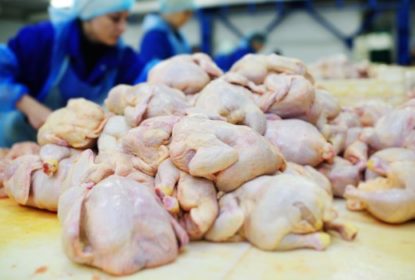
Condemnations, Food Safety, Global TOPICS, Interviews, News, PHT GLOBAL, PHT US, Podcast, TOPICS, Videos
... New avian leukosis rule expected to reduce waste, improve efficiency for processing plants and FSIS
Aug 13, 2020Jennifer GrullonComments Off on New avian leukosis rule expected to reduce waste, improve efficiency for processing plants and FSIS
Acceptance of a petition designating avian leukosis lesions on poultry carcasses as a trimmable condition is expected to reduce waste and improve efficiency at processing plants while allowing meat...... Antibiotics and the poultry industry: What’s next?
Aug 12, 2020Jennifer GrullonComments Off on Antibiotics and the poultry industry: What’s next?
Nearly 6 in 10 broiler chickens in the US are now raised without antibiotics. Is this all-or-nothing strategy necessarily a good trend? And what precautions need to be taken?... Tailoring control measures key to managing Salmonella
Aug 10, 2020Jennifer GrullonComments Off on Tailoring control measures key to managing Salmonella
Producers need to take more care in matching Salmonella vaccines for broiler breeders to the strain of the pathogen challenging their flocks.... Live Salmonella vaccines, some DFMs may not mix
Jul 20, 2020Jennifer GrullonComments Off on Live Salmonella vaccines, some DFMs may not mix
By Philip A. Stayer, DVM, MS, ACPV, Corporate Veterinarian, Sanderson Farms, Inc.... Vaccination with Poulvac® E. coli yields economic benefits in broilers
Jul 07, 2020Jennifer GrullonComments Off on Vaccination with Poulvac® E. coli yields economic benefits in broilers
DISCOVERIES, Issue 7: Vaccinating broilers against Escherichia coli yielded a favorable return on investment in a recent trial... USDA urged to give producers time to trial Campylobacter and Salmonella interventions
Jun 28, 2020Jennifer GrullonComments Off on USDA urged to give producers time to trial Campylobacter and Salmonella interventions
Greater flexibility is needed in official Salmonella and Campylobacter testing regimes in order to support poultry producers and processors who are trialing new interventions to tackle both... Study: Live S. Typhimurium vaccine reduces S. Infantis colonization
Jun 10, 2020Jennifer GrullonComments Off on Study: Live S. Typhimurium vaccine reduces S. Infantis colonization
Investing in vaccination programs to develop cross-protection against some of the most common strains of Salmonella could help limit the number of foodborne outbreaks of the pathogen.... Mountaire Farms is first company to carry the One Health Certified label
Jun 04, 2020Jennifer GrullonComments Off on Mountaire Farms is first company to carry the One Health Certified label
Mountaire Farms is the first animal protein company to carry the One Health Certified label, demonstrating its commitment to animal production standards established by the program.... CDC report urges more vaccination against Salmonella
May 13, 2020Jennifer GrullonComments Off on CDC report urges more vaccination against Salmonella
The CDC has urged more vaccination to control Salmonella in poultry flocks after latest figures revealed illnesses linked to certain strains of the pathogen were stalling or in decline.... Measuring effectiveness of on-farm interventions key to Salmonella control
Mar 30, 2020Jennifer GrullonComments Off on Measuring effectiveness of on-farm interventions key to Salmonella control
Understanding the impact specific on-farm interventions can have on Salmonella is critical to helping the US poultry industry meet government standards around the disease, according to a leading...... New USDA process-verified program, meat label to focus on responsible poultry, livestock care
Jan 14, 2020Jennifer GrullonComments Off on New USDA process-verified program, meat label to focus on responsible poultry, livestock care
A new USDA process-verified program and meat label is expected help US poultry and livestock producers demonstrate their commitment to responsible antibiotic management.... What more can live production do to reduce Salmonella in poultry?
Dec 26, 2019Jennifer GrullonComments Off on What more can live production do to reduce Salmonella in poultry?
Successful Salmonella control throughout live poultry production requires an integrated effort, attention to detail and careful follow-through to help processing plants meet more stringent USDA...... Salmonella’s sex life key to mitigating food safety risks
Nov 14, 2019Jennifer GrullonComments Off on Salmonella’s sex life key to mitigating food safety risks
Food safety challenges linked to Salmonella could be tackled more effectively by better understanding the sex life of bacteria, according to a leading US government veterinarian.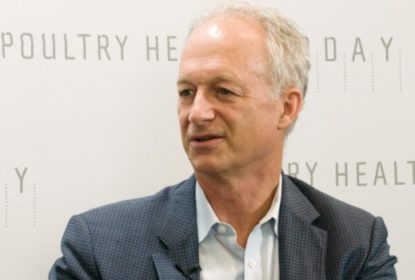
Biosecurity, Food Safety, Global TOPICS, Interviews, News, PHT GLOBAL, PHT US, Podcast, TOPICS, Videos
... Perdue veterinarian seeks answers to inconsistent foodborne pathogen load
Oct 28, 2019Jennifer GrullonComments Off on Perdue veterinarian seeks answers to inconsistent foodborne pathogen load
Taking a closer look at why incidence of Salmonella and Campylobacter varied widely on farms in the same production system helped to demonstrate the importance of management and communication with...... US poultry industry shifting focus to Campylobacter, Salmonella Infantis
Sep 19, 2019Jennifer GrullonComments Off on US poultry industry shifting focus to Campylobacter, Salmonella Infantis
The US poultry industry needs to revisit Campylobacter-control strategies in preparation for new performance standards coming from USDA’s Food Safety and Inspection Service, Ashley Peterson,...... Vaccinated birds shown to have lower incidence of Salmonella at processing
Sep 04, 2019Jennifer GrullonComments Off on Vaccinated birds shown to have lower incidence of Salmonella at processing
Broilers vaccinated against Salmonella showed reduced levels of the pathogen at processing in a recent study, according to Charles Hofacre, PhD, president, Southern Poultry Research Group. Inc.... Preharvest reduction of Salmonella, Campylobacter key to better control efforts
Aug 27, 2019Jennifer GrullonComments Off on Preharvest reduction of Salmonella, Campylobacter key to better control efforts
By Abhinav Upadhyay, DVM, PhD, postdoctoral associate and Dan J. Donoghue, PhD, professor, University of Arkansas... Integrated plan with live production needed to meet new Salmonella standards
Jun 13, 2019Jennifer GrullonComments Off on Integrated plan with live production needed to meet new Salmonella standards
Poultry companies struggling to meet higher USDA standards for Salmonella need to increase control efforts in live production to help avoid the dreaded Category 3.... Poultry producers facing higher hurdles with USDA food-safety standards
May 16, 2019Jennifer GrullonComments Off on Poultry producers facing higher hurdles with USDA food-safety standards
Poultry producers can expect to jump higher hurdles as USDA continues to raise the bar for food safety.... Moving up: Vaccinating broilers may help poultry companies improve Salmonella ratings
May 13, 2019Jennifer GrullonComments Off on Moving up: Vaccinating broilers may help poultry companies improve Salmonella ratings
Vaccinating broilers against Salmonella could be an effective live-side intervention for obtaining higher ratings in the Salmonella categorizations established by the USDA’s FSIS... More than half of US broilers raised without antibiotics in 2018
May 06, 2019Jennifer GrullonComments Off on More than half of US broilers raised without antibiotics in 2018
Broilers raised without antibiotics accounted for 51% of total US production in 2018 — an 11-point jump from the previous year and, more significantly, up from 3% in 2014.... USDA poultry inspections can help improve live production, processing
Mar 15, 2019Jennifer GrullonComments Off on USDA poultry inspections can help improve live production, processing
By Philip A. Stayer, DVM, MS, ACPV Corporate Veterinarian Sanderson Farms, Inc.... Lightening the load: Teamwork between live production, processing key to reducing foodborne pathogens in poultry
Feb 15, 2019Jennifer GrullonComments Off on Lightening the load: Teamwork between live production, processing key to reducing foodborne pathogens in poultry
While statistics show the US poultry industry has made great strides reducing foodborne pathogens, USDA’s new standards for Salmonella and Campylobacter in chicken parts have made poultry companies...... New standards for foodborne pathogens expanding control programs to live production
Feb 06, 2019Jennifer GrullonComments Off on New standards for foodborne pathogens expanding control programs to live production
A rise in the prevalence of Salmonella on whole chicken carcasses since USDA changed the testing medium used could indicate the prevalence of the pathogen was previously underestimated.... ‘Take a holistic approach’ to get the most from Salmonella vaccination
Feb 01, 2019Jennifer GrullonComments Off on ‘Take a holistic approach’ to get the most from Salmonella vaccination
TOOLBOX, Issue 4: An interview with Marco Quiroz, DVM, Zoetis... Vaccination of broilers ‘quick and easy’ way to get Salmonella under control
Jan 24, 2019Jennifer GrullonComments Off on Vaccination of broilers ‘quick and easy’ way to get Salmonella under control
Vaccination of broilers against Salmonella may be the best and most expedient option for producers struggling to meet USDA performance standards at the processing plant, said Chuck Hofacre, DVM, PhD,...... Refined carbs show promise as ‘sentinel’ for Salmonella control
Jan 23, 2019Jennifer GrullonComments Off on Refined carbs show promise as ‘sentinel’ for Salmonella control
Higher government standards for Salmonella control have put more pressure on poultry companies to reduce incidence on broiler farms and lower the pathogen load going into processing.... Modified-live vaccination reduced salmonellosis in Brazilian study
Sep 20, 2018Jennifer GrullonComments Off on Modified-live vaccination reduced salmonellosis in Brazilian study
New research confirms that modified-live vaccines (MLVs) can effectively reduce salmonellosis in broilers — a leading cause of food poisoning in humans.... Special report: Poultry veterinarians teaming up to reduce condemnations, optimize food safety
Sep 18, 2018Jennifer GrullonComments Off on Special report: Poultry veterinarians teaming up to reduce condemnations, optimize food safety
Minimizing carcass condemnations and reducing the load of foodborne pathogens moving from broiler farms into processing might seem like separate production objectives — and they are.... C. perfringens on broiler meat can survive processing, potentially sicken consumers
Apr 16, 2018Jennifer GrullonComments Off on C. perfringens on broiler meat can survive processing, potentially sicken consumers
Listen to or download the podcast Most broiler producers know the economic impact of necrotic enteritis caused by Clostridium perfringens, particularly in birds raised without antibiotics. Now...... Is incentivized vaccination the answer to poultry’s public-health woes?
Dec 07, 2017Jennifer GrullonComments Off on Is incentivized vaccination the answer to poultry’s public-health woes?
Governments and retailers should incentivize broiler producers to make better use of vaccines that could help protect public health, according to an expert in poultry infections.... Campylobacter in poultry: An elusive pathogen
Nov 30, 2017Jennifer GrullonComments Off on Campylobacter in poultry: An elusive pathogen
By Orhan Sahin, DVM, PhD, Dip ACVM Assistant Professor Veterinary Diagnostic and Production Animal Medicine Iowa State University, Ames, Iowa... Salmonella on carcass skin can contaminate ground turkey
Nov 06, 2017Jennifer GrullonComments Off on Salmonella on carcass skin can contaminate ground turkey
Salmonella on the skin, rather than in infected muscle tissue, may be a significant contributor to ground-turkey contamination, indicates a study presented at the 2017 annual meeting of the American...... Three-pronged E. coli strategy to help cut losses, improve profitability
Oct 11, 2017Jennifer GrullonComments Off on Three-pronged E. coli strategy to help cut losses, improve profitability
Managing Escherichia coli infection in commercial poultry flocks has to be tackled on three fronts to help cut losses and improve profitability, says Allan Ball, of the Slate Hall Veterinary Practice...... Poultry veterinarians facing new challenges with NAE trend, food safety guidelines
Oct 06, 2017Jennifer GrullonComments Off on Poultry veterinarians facing new challenges with NAE trend, food safety guidelines
The NAE production movement has helped reduce antibiotic use in poultry for good reason, but veterinarians need to make sure the pendulum doesn’t swing so far they have no antibiotics left to...... Hofacre: There’s always room for improvement with Salmonella
Sep 21, 2017Jennifer GrullonComments Off on Hofacre: There’s always room for improvement with Salmonella
Most US poultry companies are doing an “outstanding job” controlling Salmonella, but there's always room for improvement.... Finding the right balance with antibiotics and flock welfare
Aug 08, 2017Jennifer GrullonComments Off on Finding the right balance with antibiotics and flock welfare
Part 3: The issue of antibiotics in poultry continues to divide the poultry industry, with one side supporting routine preventive use and the other committed to raising birds without antibiotics.... New rule, same baseline skews sampling for foodborne pathogens
Aug 03, 2017Jennifer GrullonComments Off on New rule, same baseline skews sampling for foodborne pathogens
Part 2: Last year, the US poultry industry switched from buffered peptone water to “neutralized” buffered peptone to reduce the risk of false negatives when sampling whole chickens and parts for...... US broiler industry steadily reducing incidence of foodborne pathogens
Aug 02, 2017Jennifer GrullonComments Off on US broiler industry steadily reducing incidence of foodborne pathogens
Part 1: The US broiler industry is successfully and steadily reducing the prevalence of Salmonella and Campylobacter on chicken parts since the USDA’s new performance standards took effect.... Reducing food-borne bacterial infections must be team effort
Jul 25, 2017Jennifer GrullonComments Off on Reducing food-borne bacterial infections must be team effort
Increased pressure to reduce bacterial food-borne infections in consumers is affecting poultry production from start to finish, panelists reported at a food safety roundtable, “Lightening the Load:...... Air quality affects S. Heidelberg colonization in broilers
Jun 15, 2017Jennifer GrullonComments Off on Air quality affects S. Heidelberg colonization in broilers
Improving air quality in broiler houses may be an important way to reduce colonization of S. Heidelberg, according to the results of a study presented at the 2017 International Poultry Scientific...... Teaming with poultry companies to ensure carcass quality and food safety
Jun 08, 2017Jennifer GrullonComments Off on Teaming with poultry companies to ensure carcass quality and food safety
The role of today’s technical services veterinarian needs to go beyond posting sessions, field trials, product support and customized disease-management programs.... Both organic, conventional processing reduce Campylobacter on carcasses
May 03, 2017Jennifer GrullonComments Off on Both organic, conventional processing reduce Campylobacter on carcasses
Both conventional and organic processing methods reduced Campylobacter on broiler carcasses in a recent study by Purdue University. Matthew Bailey, a grad student at the university, discussed the...... New lasalocid MRLs relieve export restrictions for broilers
Feb 15, 2017Jennifer GrullonComments Off on New lasalocid MRLs relieve export restrictions for broilers
Broiler producers who want more diversity in their anticoccidial-rotation plan can now consider the ionophore lasalocid without worrying about it putting a damper on exports, says Jon Schaeffer, DVM,...... Observe, judge, act — Veterinarian offers practical tips for reducing carcass condemnations
Feb 14, 2017Jennifer GrullonComments Off on Observe, judge, act — Veterinarian offers practical tips for reducing carcass condemnations
Poultry processors and regulators have the same objectives — minimize chicken condemnations and maximize food safety. Working as a team is the best way to safeguard consumer health and maintain...... Good communication key to protecting poultry parts during FSIS inspection
Feb 10, 2017Jennifer GrullonComments Off on Good communication key to protecting poultry parts during FSIS inspection
One key to food safety is designing and implementing poultry-inspection protocols that reflect consumer behavior. For example, federal inspectors are refocusing their strategy to address consumer...... Foster Farms’ vet shares tips for managing a food-safety crisis in the poultry industry
Feb 05, 2017Jennifer GrullonComments Off on Foster Farms’ vet shares tips for managing a food-safety crisis in the poultry industry
You’re a veterinarian at a major poultry company that’s just been slammed by a food-safety crisis. Can you imagine what that’s like? And more important, would you know what to do?... Cage-free hen housing: How far will the pendulum swing?
Jan 28, 2017Jennifer GrullonComments Off on Cage-free hen housing: How far will the pendulum swing?
By John Brown, DVM Senior Technical Services Veterinarian, Zoetis... Poultry companies need to balance consumer preferences with flock health, welfare and food safety
Dec 19, 2016Jennifer GrullonComments Off on Poultry companies need to balance consumer preferences with flock health, welfare and food safety
Suzanne Dougherty, DVM, a consulting poultry veterinarian based in Alabama, talks with Poultry Health Today about the challenges of reducing or even eliminating antibiotics in broiler production...... NCC scientist: Food safety is everyone’s job
Dec 15, 2016Jennifer GrullonComments Off on NCC scientist: Food safety is everyone’s job
Food safety is a chain stretching from producers to consumers. Ashley Peterson, PhD, of the National Chicken Council, shared her insights at the recent “Young Chicken Gross Pathology Workshop” at...... S. enteritidis shedding more frequent among hens in conventional cages
Jul 24, 2016Jennifer GrullonComments Off on S. enteritidis shedding more frequent among hens in conventional cages
Fecal shedding of Salmonella enteritidis was significantly more frequent among experimentally infected laying hens in conventional cages compared to hens housed in enriched colony cages, indicates a...... Coccidiosis, intestinal health and their relationship to pathogen loads of harvested broilers
Jun 30, 2016Jennifer GrullonComments Off on Coccidiosis, intestinal health and their relationship to pathogen loads of harvested broilers
For more than 60 years, antibiotics and synthetic anticoccidials have teamed up to keep coccidiosis under control and produce least-cost meat, said Donald Waldrip, DVM, senior technical services...
Food Safety, Global TOP NEWS, ippe2016- Interviews with experts, News, PHT GLOBAL, PHT US, TOP NEWS, Videos
... Meeting the new USDA/FSIS standards for Salmonella and Campylobacter in poultry
Apr 10, 2016Jennifer GrullonComments Off on Meeting the new USDA/FSIS standards for Salmonella and Campylobacter in poultry
USDA/FSIS issued new standards for Salmonella and Campylobacter in ground poultry meat and chicken and turkey parts.
Announcements, Antibiotic-free, Flock welfare, Food Safety, Gut Health, Infectious Diseases, ippe2016 - Highlights from our latest issue, Mobile Only, News, PHT GLOBAL, PHT US
... Specialists explore new options for managing flock health while defending judicious antibiotic use
Mar 27, 2016Jennifer GrullonComments Off on Specialists explore new options for managing flock health while defending judicious antibiotic use
Growing demand for poultry raised without food-animal antibiotics has put more pressure on veterinarians to find alternative yet dependable disease-control options, according to a panel of nine...
Antibiotic-free, Flock welfare, Food Safety, ippe2016- Interviews with experts, PHT GLOBAL, PHT US, Videos
... Balancing consumers’ preferences with flock health, welfare and food safety
Feb 11, 2016Jennifer GrullonComments Off on Balancing consumers’ preferences with flock health, welfare and food safety
Suzanne Dougherty, DVM, a consulting poultry veterinarian based in Alabama, talks with Poultry Health Today about the challenges of reducing or even eliminating antibiotics in broiler production...... Free 2015 AAAP Proceedings Booklet
Jan 21, 2016Jennifer GrullonComments Off on Free 2015 AAAP Proceedings Booklet
Pressures to reduce or eliminate antibiotics from poultry production have created new health and welfare challenges for chickens and turkeys. In this lively roundtable discussion, poultry industry...... Salmonella prevention requires teamwork between production and processing
Jan 16, 2016Jennifer GrullonComments Off on Salmonella prevention requires teamwork between production and processing
Identifying the pathways of Salmonella contamination has poultry producers and processors looking for answers in every step of the process from the farm to table.... FDA: Salmonella, antibiotic resistance declining in US poultry meat
Jan 02, 2016Jennifer GrullonComments Off on FDA: Salmonella, antibiotic resistance declining in US poultry meat
Incidence of Salmonella in ground chicken and turkey meat has dropped to its lowest level since the FDA began monitoring the foodborne pathogen, according to a new report. However, the development...... 80% of Americans wrongly believe chicken contains hormones, steroids
Dec 16, 2015Jennifer GrullonComments Off on 80% of Americans wrongly believe chicken contains hormones, steroids
Nearly 80% of Americans mistakenly believe that chicken contains added hormones or steroids, when in fact no chicken sold or raised in the US is given hormones or steroids, according to a survey by...... Sanderson CEO gives three reasons for sticking with antibiotics
Jul 18, 2015Jennifer GrullonComments Off on Sanderson CEO gives three reasons for sticking with antibiotics
Count Joe Sanderson Jr., chairman and CEO of Sanderson Farms, as being on the opposite side of the current movement to shift away from the use of antibiotics in poultry production, according to a...... Pathogens on farm and in processing related
Jul 13, 2015Jennifer GrullonComments Off on Pathogens on farm and in processing related
Salmonella and Campylobacter prevalence and loads on the farm are significantly associated with prevalence and loads of the same pathogens at processing.... USDA proposes new measures to reduce Salmonella, Campylobacter
Apr 06, 2015Jennifer GrullonComments Off on USDA proposes new measures to reduce Salmonella, Campylobacter
The USDA’s Food Safety and Inspection Service (FSIS) on January 21 proposed new federal standards to reduce Salmonella and Campylobacter in ground chicken and turkey products as well as raw chicken...... CDC turns to Yelp for tracking reports of foodborne illness
Mar 05, 2015Jennifer GrullonComments Off on CDC turns to Yelp for tracking reports of foodborne illness
The Centers for Disease Control (CDC) recently posted analysis of using the urban business-review site Yelp to identify unreported outbreaks of foodborne illness, reports the latest edition of...... FDA finds positive and negative trends in antimicrobial resistance in bacteria isolated from humans, retail meats and food animals
Mar 04, 2015Jennifer GrullonComments Off on FDA finds positive and negative trends in antimicrobial resistance in bacteria isolated from humans, retail meats and food animals
The Food and Drug Administration has released its National Antimicrobial Resistance Monitoring System (NARMS) 2011 Executive Report, showing both increasing and decreasing antimicrobial resistance...... Isolation of Campylobacter from the circulating blood of broilers
Feb 26, 2015Jennifer GrullonComments Off on Isolation of Campylobacter from the circulating blood of broilers
From a poultry processing viewpoint, Campylobacter presence in circulating blood of market-age broilers may increase the likelihood of cross-contamination between birds during slaughter.... Improving Rapid Detection Methods for Foodborne Pathogens
Jan 30, 2015Jennifer GrullonComments Off on Improving Rapid Detection Methods for Foodborne Pathogens
Researchers have developed a microfluidic device that exploits cell movement to separate live and dead bacteria during food processing.... Regulatory expert urges poultry producers to document, document, document
Jan 28, 2015Jennifer GrullonComments Off on Regulatory expert urges poultry producers to document, document, document
Henry Turlington, PhD, of AFIA, points out the implications of the new Food Safety and Modernization Act (FSMA) regulations and the need for improved communication and record keeping for poultry...... US Poultry Industry Responds to New Food Safety Proposal
Jan 28, 2015Jennifer GrullonComments Off on US Poultry Industry Responds to New Food Safety Proposal
The industry body, the National Chicken Council and one poultry processor have welcomed the aims of the recently announced proposal to reduce Salmonella and Campylobacter on poultry parts... S. Heidelberg colonization reduced with in-feed treatment
Jan 28, 2015Jennifer GrullonComments Off on S. Heidelberg colonization reduced with in-feed treatment
Broilers that received bacitracin methylene disalicylate (BMD®) plus a probiotic selected for its ability to survive the feed-pelleting process had a markedly lower prevalence of Salmonella...... Rising issues with coccidiosis and necrotic enteritis
Jan 27, 2015Jennifer GrullonComments Off on Rising issues with coccidiosis and necrotic enteritis
Suzanne Dougherty, DVM, encourages “back to basics” with gut-health management while exploring new options... USDA announces new inspection system for poultry products
Sep 26, 2014Jennifer GrullonComments Off on USDA announces new inspection system for poultry products
The US Department of Agriculture's (USDA) Food Safety and Inspection Service (FSIS) last week announced a critical step forward in making chicken and turkey products safer for Americans to eat.... S. enteritidis frequency in eggs similar in conventional and enriched cage systems
Jul 19, 2014Jennifer GrullonComments Off on S. enteritidis frequency in eggs similar in conventional and enriched cage systems
The frequency of egg contamination with S. enteritidis did not significantly differ between hens housed in conventional and enriched cages, investigators say in the March 2014 issue of Poultry...... Reality check: Multidrug-resistant strains of Salmonella rare in humans
Jun 01, 2014Jennifer GrullonComments Off on Reality check: Multidrug-resistant strains of Salmonella rare in humans
Confidently presenting facts — not defensive rhetoric — can go a long way toward shaping consumer opinions about commercial poultry production and the importance of maintaining flock health,...... CDC releases progress report on food safety
Apr 28, 2014Jennifer GrullonComments Off on CDC releases progress report on food safety
The US Centers for Disease Control and Prevention (CDC) released a Foodborne Diseases Active Surveillance Network (FoodNet) report last week indicating that rates of Salmonella recently declined...... Experimental and applied approaches to control Salmonella in broiler processing
Mar 17, 2014Jennifer GrullonComments Off on Experimental and applied approaches to control Salmonella in broiler processing
By Dr. Mark E. Berrang USDA—Agricultural Research Service, Russell Research Center, Athens, GA... Incentives missing in New Poultry Inspection System, says NCC’s Peterson
Feb 26, 2014Jennifer GrullonComments Off on Incentives missing in New Poultry Inspection System, says NCC’s Peterson
The ability to forgo the SIP waiver process for on-line processing may be the rule’s biggest benefit for the poultry industry, said the National Chicken Council’s Vice President of Science and...... CDC: Widespread use of antibiotics in hospitals is leading cause of resistance
Jan 24, 2014Jennifer GrullonComments Off on CDC: Widespread use of antibiotics in hospitals is leading cause of resistance
The most important cause of antibiotic-resistant infections in people can be attributed to widespread antibiotic use in hospitals, according to the Centers for Disease Control and Prevention (CDC).... Organic raw poultry not necessarily safer
Jan 15, 2014Jennifer GrullonComments Off on Organic raw poultry not necessarily safer
Organic raw poultry is not necessarily safer for consumption than conventionally raised poultry, indicates a study from the University of Tennessee.


